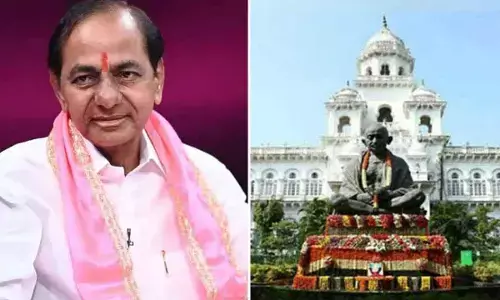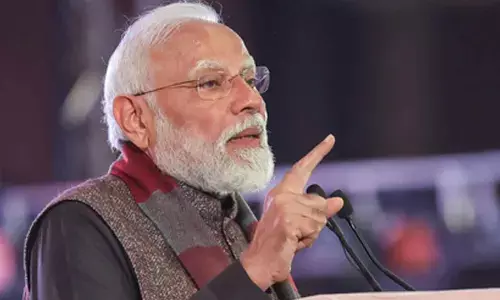India and US can learn from each other

India and the United States of America are the two largest democracies in the world. For most of this 21st century, they have served as solid examples for others to follow. The same cannot be said for their delivery of healthcare.
India and the United States of America are the two largest democracies in the world. For most of this 21st century, they have served as solid examples for others to follow. The same cannot be said for their delivery of healthcare.
The World Health Organization (WHO) provided its first and only ranking of health systems in 2000. The US ranked 37 and India ranked 112 out of 191 countries.
The current coronavirus crisis, which the WHO declares has the potential of becoming a pandemic illustrates the need for a world-class health care system. Both India and the US have coronavirus cases. India has responded quickly by putting a systemic nation-wide plan in place to combat the virus.
The US has responded very slowly as President Donald Trump has politicized the issue, dismissed its importance and even labeled it a "new hoax".
Although there have been distinctly different responses by the US and India to the coronavirus epidemic and there was a substantial distance between their rankings in both cited studies, there are differences and similarities in the healthcare delivery in these two democracies.
More importantly, there are lessons that they can learn from each other to enhance the healthcare delivered to and health of their citizens.
There are many differences between India and the US healthcare systems. The primary ones include: the level of expenditure; the nature of healthcare support, and the nature of coverage.
According to various reports, the US spends close to 18 per cent of its GDP on healthcare compared to less than just 4 per cent of GDP by India. The average expenditure per capita in the US more than $10,000 in the US and less than $100 in India.
This difference is huge. So, too is the nature of healthcare support. In the US there is broad and extensive quality support through both public and private facilities.
In India, the private sector dominates quality healthcare delivery which restricts access for many middle class or poor citizens.
This disparity is heightened by the fact that because a majority of Americans have some form of insurance coverage -- only 10 to 12 per cent have to pay for healthcare out of their own pockets.
In contrast, around 70 per cent of Indians do not have any health insurance. So, they have to pay out of their own pocket for medical services. In spite of these differences which appear gargantuan, there are some similarities of considerable magnitude in the nature of the healthcare systems as well.
In the US and India alike, there are far too few medical facilities and medical professionals in rural areas. There used to be an adequate supply in the US but they have disappeared over the past few decades.
There have never been enough in India in the rural areas where over 66 per cent of the citizens reside.
In both countries, businesses interests, hospitals, medical doctors and other influentials have a substantial impact on health policies. And, the individual states (50 in the US and 28 in India) determine to a great extent the nature of the public health system within their boundaries.
Those who fare most poorly in both the US and India are the poor. In the US, poor adults are five times as likely as those with good incomes to report being in fair or poor health. In India, a recent study found that the poor in the poorer states made higher use of public health services but were still paying higher out of pocket expenses than those in states that were more well off.
These similarities and differences highlight potential areas to address to improve the healthcare delivery in both countries. And, even though neither the US nor India are at the top of the list, they still have positive healthcare lessons they can teach each other.
From America for India, there is Medicare and the Affordable Care Act (ACA). Medicare was signed into law in 1965 primarily to provide health insurance to adults 65 years and older to ensure they had access to quality healthcare as they aged. In 2018, it covered more than 52 million Americans.
The Affordable Care Act was signed into law by President Barack Obama in 2010. Its intent was to ensure access to quality healthcare for all Americans by providing affordable healthcare insurance coverage to over 55 million uninsured individuals.
For a variety of reasons, the ACA has not rolled out as planned and it is threatened by the Trump administration. Nonetheless, it is estimated that it has added close to 20 million to the insurance rolls since its implementation.
From India for America, there is innovation and cost control. In 2018, Dartmouth professor Vijay Govindarajan and Northeaster University professor Ravi Ramamurti published a book, 'Reverse Innovation in Health Care: How to Make Value Based Delivery Work'.
Their book is based upon visiting over two dozen hospitals in India and interviewing more than 125 health care executives in India and the US. In an article on their book they state, "We learned that some of the most proactive hospitals in the West are adopting world-class innovations of Indian healthcare institutions in order to boost quality, lower costs, and expand access to the underserved�"
India and the US can learn from each other. They can also learn by looking at best practices in healthcare around the world. The rankings show that both of these democracies have much room for improvement in healthcare.
In 2018, the Modi administration launched its Ayushman Bharat scheme to provide a comprehensive form of insurance coverage to the approximately 300 million Indians living in poverty and those in rural areas. This was an important step forward.

















